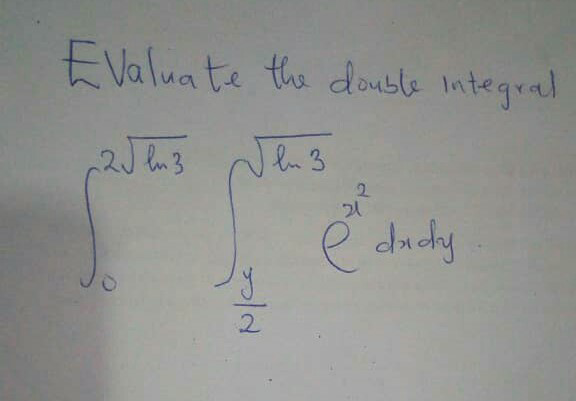
AllQuestion and Answers: Page 1490
Question Number 62203 Answers: 0 Comments: 1
Question Number 62202 Answers: 0 Comments: 0
Question Number 62201 Answers: 0 Comments: 1
Question Number 62200 Answers: 1 Comments: 1
Question Number 62199 Answers: 0 Comments: 0
Question Number 62198 Answers: 0 Comments: 0
Question Number 62197 Answers: 0 Comments: 1
Question Number 62196 Answers: 0 Comments: 1
Question Number 62195 Answers: 0 Comments: 0
Question Number 62192 Answers: 1 Comments: 0

Question Number 62186 Answers: 0 Comments: 0
Question Number 62185 Answers: 1 Comments: 0
$$\int\frac{{dx}}{{sin}\mathrm{3}{x}+{sin}\mathrm{4}{x}} \\ $$
Question Number 62184 Answers: 0 Comments: 1
Question Number 62180 Answers: 0 Comments: 5
$$\underset{{x}\rightarrow\infty} {{lim}}\:\frac{{senx}}{{x}} \\ $$
Question Number 62179 Answers: 0 Comments: 1
Question Number 62176 Answers: 2 Comments: 0

Question Number 62169 Answers: 1 Comments: 0
Question Number 62147 Answers: 0 Comments: 0

Question Number 62146 Answers: 0 Comments: 0
$${calculate}\:\int\:\sqrt{\frac{{x}−\mathrm{1}}{{x}^{\mathrm{2}} \:+\mathrm{3}}}{dx}\:. \\ $$
Question Number 62145 Answers: 1 Comments: 1
Question Number 62142 Answers: 0 Comments: 0
$$\mathrm{6}.\mathrm{38}\boldsymbol{\div}\mathrm{0}.\mathrm{2} \\ $$
Question Number 62141 Answers: 0 Comments: 1
Question Number 62140 Answers: 1 Comments: 0
$$\mathrm{2}\boldsymbol{\div}\frac{\mathrm{1}}{\mathrm{3}} \\ $$
Question Number 62139 Answers: 0 Comments: 0
$$\mathrm{6}+\mathrm{5}>\mathrm{3}×\mathrm{5}\:\mathrm{true}\:\mathrm{or}\:\mathrm{false} \\ $$
Question Number 62138 Answers: 0 Comments: 0
Question Number 62137 Answers: 0 Comments: 0
$$\left(\frac{\mathrm{1}}{\mathrm{4}}\right)^{\mathrm{3}} \\ $$
Pg 1485 Pg 1486 Pg 1487 Pg 1488 Pg 1489 Pg 1490 Pg 1491 Pg 1492 Pg 1493 Pg 1494
